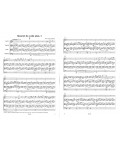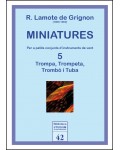
No products
Prices are tax included
Product successfully added to your shopping cart
There are 0 items in your cart. There is 1 item in your cart.
- English
- Castellano
- Català
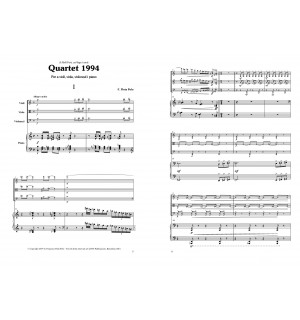 View larger
View larger
Quartet 1994 [parts]
DE561p
This isn’t a light or easy piece but a complex score which, while easy to listen to, transmits that feeling of intellectual pleasure you get with pieces which have something to say.
| Period | 20th c. |
| Instruments | vl.vla.vc.pno. |
| Pages | 66 |
| Time | 30 min |
| Contents | score |
| ISMN | 979-0-3502-0588-0 |
| Remarks | The score is sold separated with the reference E561 |
| Price of print edition | 20,80€ |
| Edition | Digital |
We are looking at a piece of considerable size (around half an hour of music) and profound content. This isn’t a light or easy piece but a complex score which, while easy to listen to, transmits that feeling of intellectual pleasure you get with pieces which have something to say. Although the author himself has mentioned on more than one occasion that you have to be very brave to compose music after what the classics wrote, in this work you can see that Fleta does have something to say, and he says it using the very personal language which makes his work unmistakeable.
The piece, which has four movements, starts with a fugue. Far from stopping at a technical exercise, this passage sets the atmosphere which will reign throughout the piece: serenity, balance and good taste. The end of the fugue, with its strettos, is remarkable for the great effect produced by the use of an ostinato of semiquavers. The central part of the movement is a melody played by the string instruments with a piano purely for accompaniment. The theme is then reprised to lead to a striking and energetic pizzicato finale.
The second movement is characterised by constant changes in time, a fact which at no time hinders the progress of the music; on the contrary, melodies are transferred between instruments with total ease and exquisite mastery. The end, of great technical difficulty, also resolves into a pizzicato, this time played pianissimo.
The third movement begins with an introduction played by the piano and soon supported by the violin, which immediately takes flight. The other strings, preventing it from taking on the solo role, accompany it until the viola reprises the initial theme. The end again focuses on the violin, with a melody which fades into nothingness.
The last movement – the longest of the four – is rhythmical and playful. It requires deep chamber work from the players and ends with a fragment dominated by semiquavers a tutti with a brilliant Coda.
David Puertas


![Quartet 1994 [parts]](https://www.clivis.cat/72-home_default/quartet-1994.jpg)









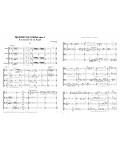


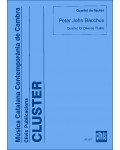

![Shoshanna [score]](https://www.clivis.cat/1512-home_default/shoshanna.jpg)
![Shoshanna [parts]](https://www.clivis.cat/1511-home_default/shoshanna.jpg)



